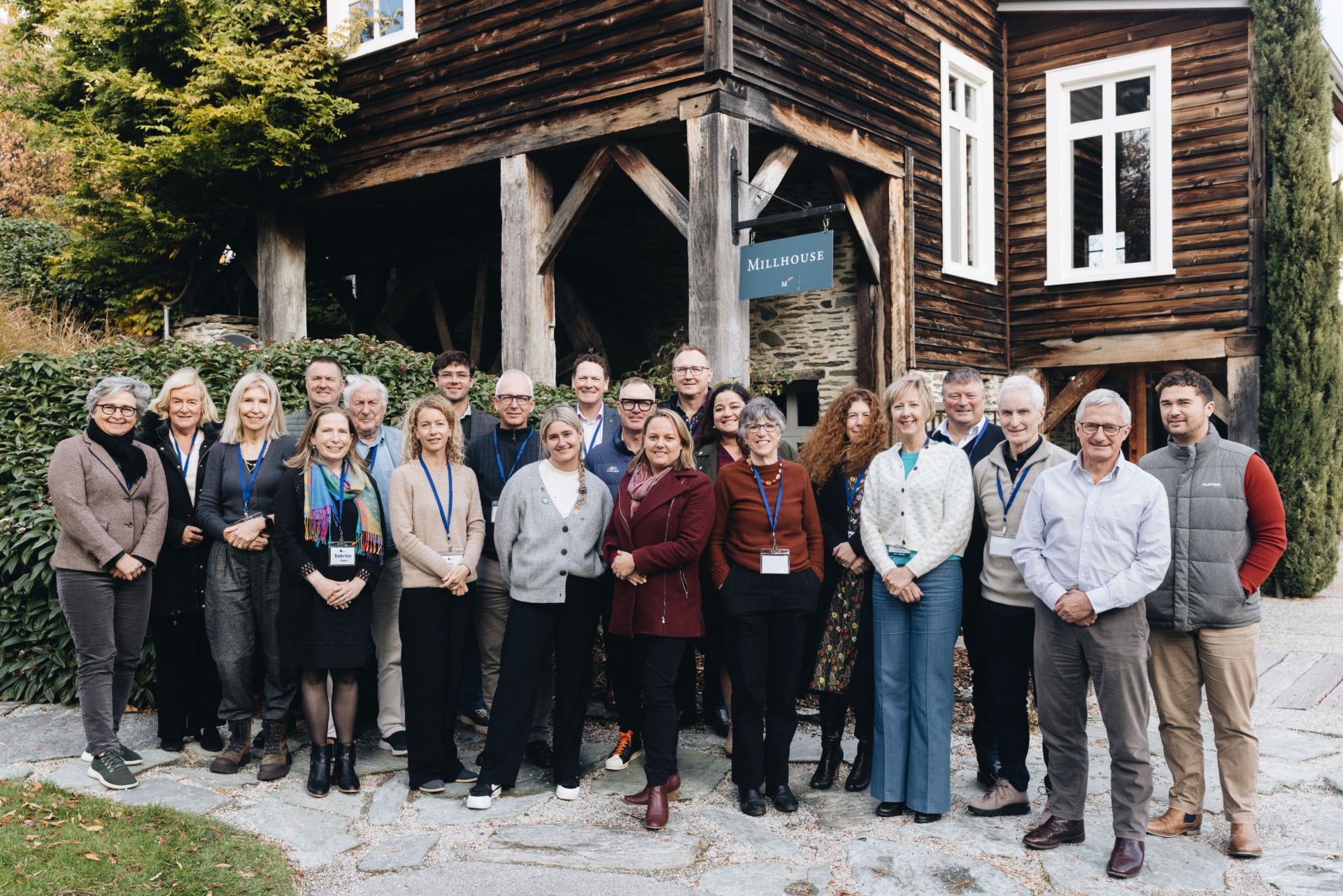This post is part of a series of interviews with thought leaders to explore issues on the frontier of the complex domain of ESG.
![]()
It’s a moment of extraordinary promise, and perhaps some peril, for businesses that are optimizing for both business and social value.
They are buffeted by criticism from both sides of the political spectrum – with the Left making charges of “greenwashing” and the Right decrying “wokewashing.” Even the term “ESG” (shorthand for Environmental, Social and Governance factors) has become a lightning rod.
In the midst of this growing political firestorm around ESG, Dave Young, Managing Director & Senior Partner, BCG Henderson Institute, who has worked with hundreds of companies on their journey to become more sustainable, argues that it’s time to refresh our thinking about what ESG means for business. He recently spoke with Aspen Institute Business & Society Program Executive Director Judy Samuelson to explain why we need bold imagination now, not heated rhetoric, to open the path to more sustainable corporate capitalism.

Judy Samuelson: Let me start by asking if you think we are moving in the right direction on ESG?
Dave Young: I think we are enormously lucky to be living in this era in business history. It’s true that there has been fury around ESG standards and proliferating metrics, and we are seeing ESG being politicized and unfairly redefined as “woke” capitalism. However, I firmly believe the growing attention that we are now paying to ESG, climate, and sustainability is rapidly leading us to more sustainable companies and corporate capitalism – when it is anchored in materiality and innovation. It opens a remarkable opportunity to re-imagine HOW we do business, invest, and collaborate across industries and sectors to drive impactful change.
But the key to meeting the challenges we face will not be found in the volume and intensity of standards, metrics, measures, and regulations. What we need to do now is harness our collective capacity for imagination and innovation, and I think these words are missing too often in most ESG discussions.
JS: Many might say that imagination is great, but what about the massive cost of moving to a more sustainable economy?
Young: There is no denying that the cost of the transition over the next 30 years is huge – probably somewhere between $120 and $150 trillion. But we need to put those costs in perspective. The assets held by U.S. financial institutions alone exceed $120 trillion. US GDP is about $20 trillion, and US companies spent $1.7 trillion in capital expenditures in 2020 according to the Census Bureau’s Annual Capital Expenditures Survey. Can companies imagine spending their next dollar of CAPEX on greener alternatives than the last? Can we imagine spending a small percentage of GDP annually to achieve a sustainable world?
We can begin to imagine how these financial resources can be re-deployed. We have done it before as my colleague Will Goetzmann wrote in his brilliant book Money Changes Everything: How Finance Made Civilization Possible. Even in these divisive times we are seeing innovations in the finance industry that bode well for the future. Consider, for example, the past path-breaking work of the Task Force on Climate-Related Financial Disclosures (TCFD) or the emergence of innovative structures for bonds linked to environmental or social impacts. Also, as a follow-up to COP 26 in Glasgow, momentum is building for financial institutions to make specific commitments to provide financing for the transition to a green economy. And of course, the incentives in the IRA (Inflation Reduction Act) will spur new investment and innovation.
JS: When you talk about corporate progress on the sustainability front, you stress that successful companies will have to move beyond thinking of ESG as “hygiene.” What do you mean by that?
Young: We see “ESG hygiene” as table stakes for leading companies. It includes the production of thorough and data rich sustainability reports that address all the environmental and social issues that are material for their industry. It requires full reporting on ESG standards and metrics, including commitments to net zero goals, and clearly articulated plans for achieving these goals. And it means working with the best audit firms to assure data. Companies will also have to demonstrate that their actions are aligned with statements of corporate purpose.
“ESG hygiene” is incredibly important, but it only provides the foundation for seeing sustainability as a competitive advantage. That is a much higher bar.
JS: When you work with companies, what are some of the indicators you see that demonstrate they have moved to that higher level?
Young: There are many. Let me mention just four here. First, we look for companies that are rethinking the boundaries of their business and portfolio. They are inventing new sustainable business models and business ecosystems that enable sustainability solutions and markets. Second, we see evolving product portfolios with a rapidly growing share of revenues and higher margins coming from the faster growth sustainability segments in the company’s markets. Third, we see more intentionality on building diverse, equitable and inclusive workforce with employee engagement scores that demonstrate that employees are captivated by the company’s purpose. And fourth, companies are engaging their suppliers in efforts to assure progress on scope 3 emissions, confirm attention to human rights and labor rights in the value chain, and build capabilities and resilience in the supply base to enhance sustainability and tune the business for the future.
In our work we see sustainability champions, but we also see plenty of companies who aren’t there yet, despite their aspirations. At the BCG Henderson Institute, we’ve looked at over 500 sustainability initiatives and find that only 1/5 connect to what drives competitive advantage and value creation, and only 1/15 are actually changing the boundaries of the business model and the basis of competition.
Working with INSEAD, we recently released a Board Pulse Check that underscores the challenge. Roughly 70% of directors reported that they are only moderately or not at all effective at integrating ESG into company strategy and governance. And although directors think their boards should devote more time to strategic reflection when it comes to ESG issues, more than half (53%) said they are not effective at doing that. A full 43% of directors cited the ability of the company to execute as one of the biggest threats to delivering on ESG goals.
JS: Any advice for companies that want to heed your call for leadership and imagination?
Young: Yes. First, they have to avoid what I call the “baseline fallacy.” Leaders need to challenge their assumptions about how stable and resilience their current business model actually is – in light of all the risks and opportunities associated with social and environmental issues. Second, they must come to terms with “sustainability scarcity.” Resources needed to achieve sustainability goals may become in short supply. Companies need to lead in accessing them, not find themselves as followers without the access to resources that will become increasingly expensive or unavailable. Third, they need to understand if they have “stranded assets” and have a plan in place to manage these risks. Fourth, they need to look for “sustainability growth vectors” to seize opportunities in the green economy. And fifth, they must engineer “sustainability ecosystems” where the company works with partners to create proprietary sustainability solutions to offer to the market.
JS: What do you think is holding us back and where do we go from here?
Young: What I have described will require truly bold imagination and innovation – that is what we need to get to a new and empowering narrative around the power of ESG. Yet in my experience many senior leaders are trapped by timid incrementalism, thinking they can thrive in the future by making their current business model a bit better. This thinking inhibits them from seizing the chance to turn sustainability into a competitive advantage and achieve higher risk-adjusted returns.
The good news is that greater imagination is within the grasp of all of us. If we unleash it, we can enable a cognitive and cultural revolution within the C Suite and the board room. My colleague, Martin Reeves, has just co-authored a book called The Imagination Machine about how to harness the unique human capacity of imagination. In it he reminds us, “It is possible that many of the eventual solutions to sustainability are not only not yet in existence, but may be a qualitative departure from our current mental models of what a solution might look like.” The book includes lots of suggestions about how to unleash your own imagination and take advantage of this exciting time.
![]()
This post is part of an interview series with thought leaders to explore frontier issues in the complex domain of ESG. We welcome BCG as a supporter for this work and thank them for their contributions, including sponsorship of the annual Aspen ESG Summit.
SUBSCRIBE TO OUR MONTHLY NEWSLETTER!
Want more insights like these on business and the health of society? Sign up to receive thought leadership and updates from the Business & Society Program each month!

